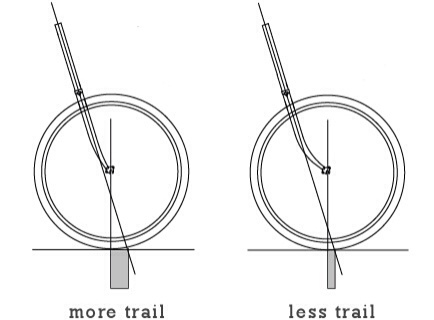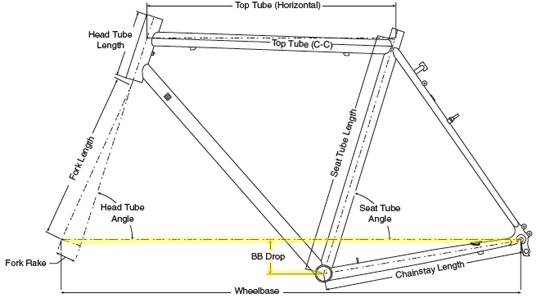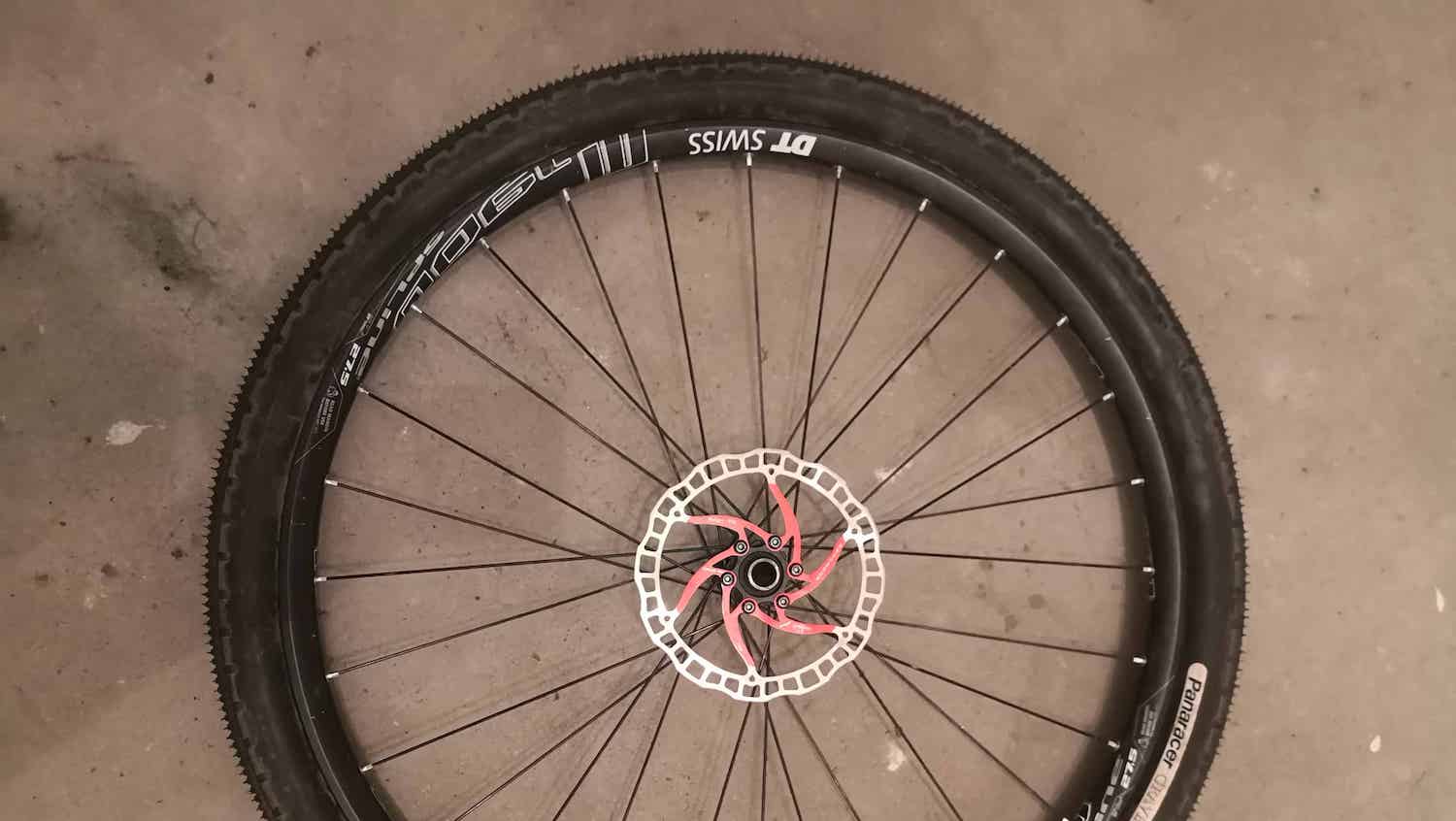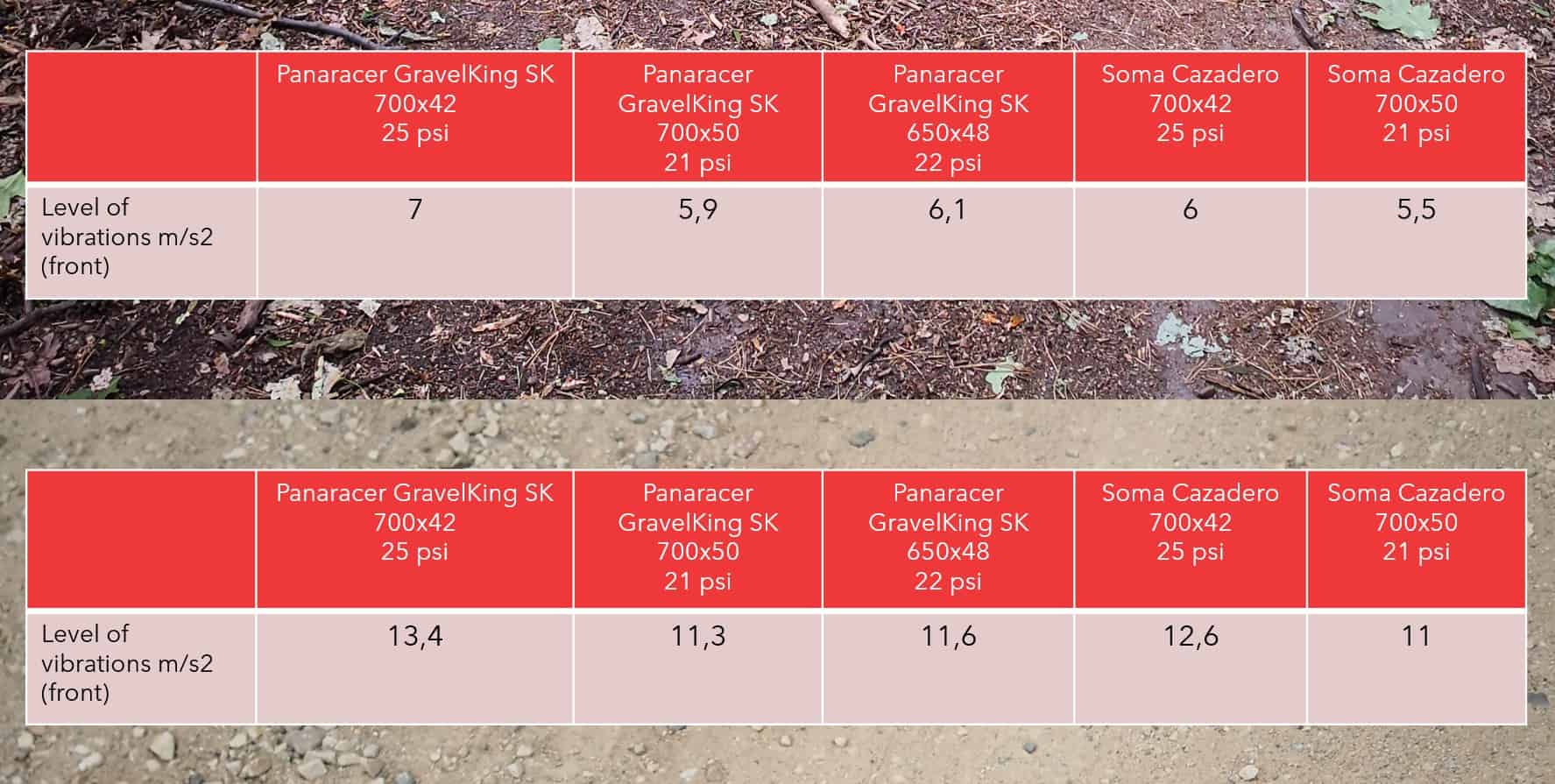In part one of my 650B vs 700C vibration test, I conducted all tests on my benchmark bike fully equipped with comfort-improving components, including a Lauf Grit SL suspension fork and Redshift ShockStop suspension stem.
For part two, I decided to conduct all the testing on a rigid gravel bike without any comfort-improving parts. And this time the results were quite different.
700C vs 650B Wheels
This is a big topic in the gravel world, especially because almost all gravel bike gives you the option to run either.
700C wheels have a larger diameter that feels faster on-road. They also roll better over obstacles off-road due to the smaller ‘angle of attack‘. However, most gravel bikes will only fit 700C x 45mm tires, so if you need more traction, you will be best off with 650B tires in a 50 to 60mm width (2.0 to 2.4″).
The smaller 650B wheels change the handling of your bike too – they will make your bike steer a bit quicker. If your ‘trail’ is already quite low (eg. 60mm) then using 650B wheels with a 50mm tire might result in having quite twitchy and nervous handling.
Then there is the matter of pedal strikes. Usually, gravel bikes have a bottom bracket drop of around 70mm, but some bikes like Specialized Diverge have up to 85mm drop. In my experience, a BB drop larger than 70mm will result in frequent pedal strikes with smaller diameter 650B wheels.
Ok, so if your steering is ok, and your BB drop is ok, should you go for 650B wheels?
Comfort Testing 700C and 650B Wheels
I used my Jamis Renegade steel benchmark bike for this test. It was equipped with a Jamis ECO carbon fork, FSA K-Force seatpost, and Brooks C17 saddle.
I measured only front-end vibrations in this test, comparing 700C x 42mm, 700C x 50mm, and 650B x 48mm Panaracer GravelKing SK tires.
Unfortunately, I did not manage to get the Soma Cazadero 650B x 50mm tire in time, so you will only see results for this model in 700 x 42mm and 700 x 50mm (watch out for the part three shootout).
I ran the tires tubeless just to be sure that the inner tube was not influencing the results in any way.
We should keep in mind that the wheel itself can influence the results. I was comparing tires on different rim models (AlexRims ATD470 for 700C and DT Swiss M1900 for 650B). But the influence of a front wheel is usually absolutely minimal in terms of vertical compliance – it’s likely somewhere between 10 and 100 times less effective at deforming vertically than a tire (depending on the tire width and pressure).
Calculating The Air Pressure Differences Between Sizes
I used different tire pressures for 700C and 650B. This is because Laplace’s law states that the tire casing tension = internal pressure x tire radius. In plain speak, when you put these wheel numbers into the equation, you always need to use lower air pressures on wider tires to maintain the equivalent casing tension on the tire.
To calculate the air pressure for my testing, I first needed to establish a starting point with the narrowest tire. After a lot of experimenting, I found that 25 psi was the lowest possible pressure for my 700C x 42mm tires. Any lower and the tires squirmed too much, resulting in a loss of traction and steering predictability in corners.
I then used Laplace’s law to find out the pressure that would give me the equivalent casing tension for the 700C x 50mm tire 0 that’s 42/50 (narrower tire divided by wider tire) multiplied by 25 (air pressure of the narrower tire) – or 21 psi.
And to calculate the 650B x 48mm tire pressure, I first needed to find the air volume difference between 700C and 650B wheels of the same width. I used this diagram to determine that 650B x 48mm and 700C x 47mm have approximately the same air volume. Using Laplace’s law once again ((42/47)*25) and we have 22 psi for the 650B wheel.
Now, I had everything ready for the 700C vs 650B shootout.
Vibration Test Results
You can see my vibration measurement procedure & outdoor test courses HERE.
When using the same tires, the 650B wheels are more comfortable. I measured 13% fewer vibrations on the bumpy forest track, and 13,5% less on the fast gravel route. But this was only true when comparing 650B x 48mm tires to 700C x 42mm tires.
When you compare 700C x 50mm tire and 650B x 48mm tire, the bigger wheel is 3,7% more comfortable on the forest track, and 2,6% on the fast gravel road. The differences are not that significant and are probably due to the bigger wheel rolling slightly better over bumps and depressions in the road.
The tire construction materials and sidewall thicknesses are very important in terms of comfort. For example, the supple 700C x 42mm Soma Cazadero was better at attenuating vibrations than the 650B x 48mm Panaracer GravelKing on the bumpy forest trail. But the 650B wheel had the edge on the fast gravel road, reducing the vibrations 8% more effectively.
The Soma Cazadero 700C x 50mm was the most comfortable tire no matter the situation. If your bike can handle that big tire, perhaps you do not need 650B at all.
Am I Switching From 700C to 650B?
On one hand, there is certainly a tangible improvement in comfort when switching from 700C x 42mm to 650B x 48mm tires. But on the other hand, the 650B setup on my bike results in slightly more nervous steering, and frequent pedal strikes. This is not an ideal situation.
If I was to change my benchmark bike to a frame that better supported 650B wheels, would I go with it? Perhaps. I like that the smaller wheels feel more agile and fun to ride, but I don’t like that they don’t roll as effectively over bigger bumps and holes in the road.
I think 700C wheels and supple 42mm tires are probably the best for my current situation. They offer the best compromise between traction, comfort, and speed – both on-road and off-road.
But I will be conducting a third 700C vs 650B shootout, so let’s see if I change my mind.









